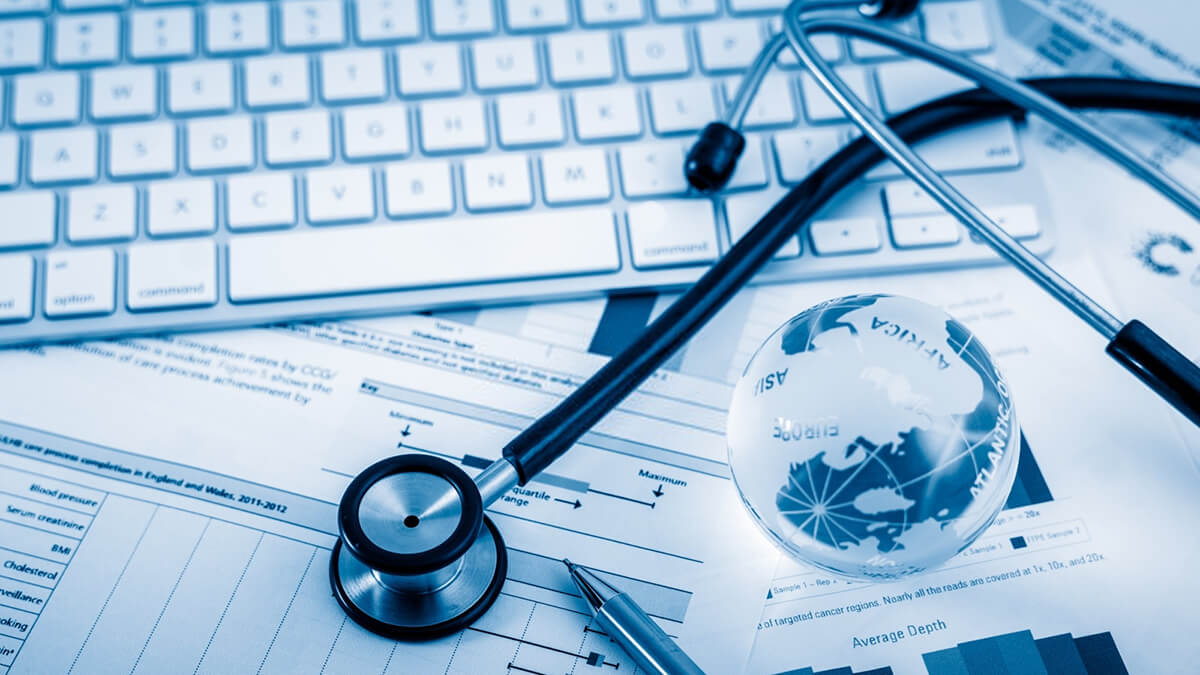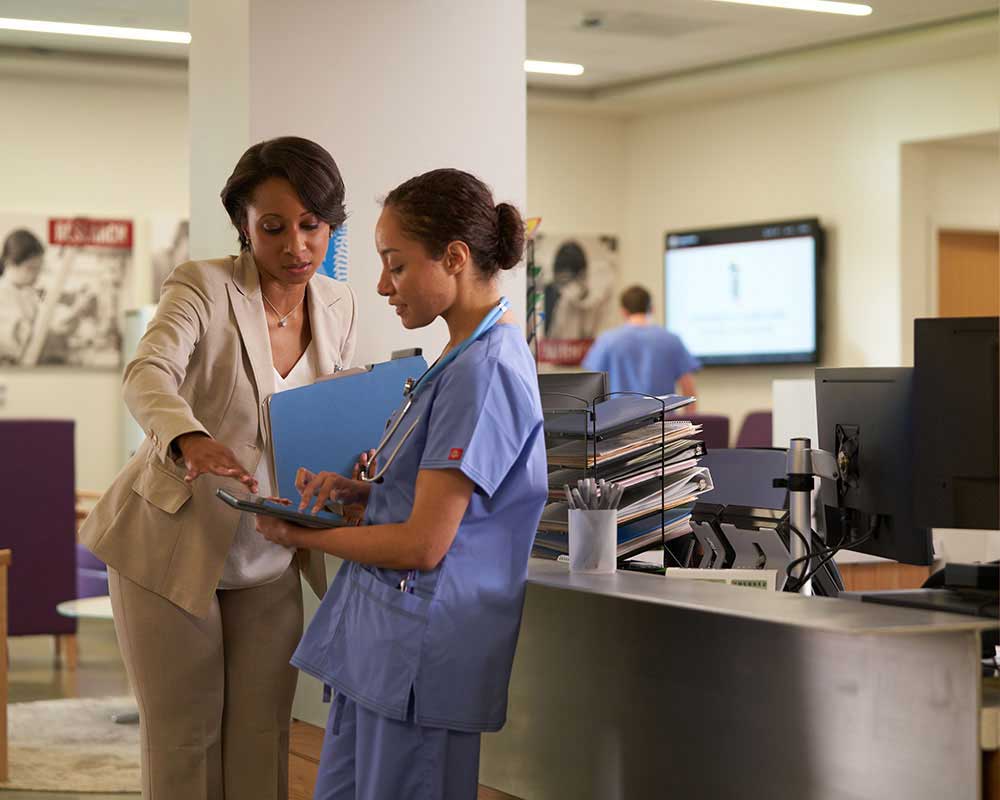Exactly How to Boost Effectiveness in Medical Administration with Modern Tools
Exactly How to Boost Effectiveness in Medical Administration with Modern Tools
Blog Article
Best Practices in Medical Administration for Improving Effectiveness and Lowering Expenses
In the ever-evolving landscape of medical care, the search of ideal practices in clinical administration is extremely important for improving efficiency and curbing expenses. By incorporating innovative innovations such as digital wellness records and telemedicine, healthcare service providers can streamline operations and improve patient care.
Leveraging Advanced Modern Technology
In today's rapidly evolving health care landscape, leveraging sophisticated modern technology is no longer optional yet necessary for efficient clinical administration. The assimilation of digital solutions into healthcare systems has changed the way facilities operate, simplifying procedures and enhancing person treatment. Electronic Health And Wellness Records (EHRs) are pivotal, supplying extensive patient data that can be accessed immediately by authorized employees, hence lowering redundancy and lessening errors. By centralizing individual information, EHRs get rid of the need for troublesome documents and facilitate seamless interaction among doctor.
Telemedicine is one more technical advancement that has actually transformed individual communication. It offers ease for both individuals and medical care professionals by allowing remote assessments, which can reduce the need for in-person gos to and optimize consultation scheduling. Furthermore, telehealth platforms can extend health care accessibility to rural or underserved areas, bridging spaces in treatment shipment.
Additionally, using Expert system (AI) and artificial intelligence is becoming progressively widespread in predictive analytics, enabling for early discovery of prospective health and wellness problems and even more educated decision-making. These technologies, when incorporated efficiently, can improve diagnostic accuracy and personalize individual treatment plans, inevitably leading to improved health care outcomes and operational effectiveness.
Optimizing Resource Appropriation
By strategically handling resources such as employees, equipment, and funds, medical care facilities can significantly boost their functional efficiency, improve individual outcomes, and lower unneeded expenditures. The initial action in optimizing source allotment entails conducting an extensive assessment of current assets and recognizing locations where resources might be underutilized or exhausted.
Prioritizing source appropriation based on individual requirements and solution needs is important. This entails lining up sources with high-demand locations, such as emergency treatment or specialized treatments, to guarantee timely and reliable client care. Applying adaptable staffing designs can also optimize labor resources by changing employees allocation in response to changing patient quantities. In addition, welcoming telemedicine and other technical solutions can ease physical resource restrictions by offering alternative opportunities for patient-provider communications.
Monetary sources ought to be diligently kept an eye on and alloted with calculated foresight to support both temporary functional demands and long-term institutional goals. This consists of investing in training programs that boost staff competencies and adopting energy-efficient practices that reduce functional costs (medical administration). Eventually, an enhanced resource allowance technique fosters a sustainable healthcare atmosphere that is receptive, effective, and economically sensible
Streamlining Operations Procedures
When healthcare centers purpose to improve operational efficiency, improving workflow procedures ends up being a crucial focus. Efficient workflows decrease redundancy, eliminate unneeded steps, and boost coordination among health care specialists. This strategy not just speeds up service shipment yet also improves the quality of client i loved this care.

Following, technology assimilation plays a significant duty in streamlining operations. Applying electronic wellness documents (EHRs) and electronic doctor order entry (CPOE) systems reduces documentation, minimizes human error, and makes sure details comes to all pertinent workers. In addition, leveraging telemedicine systems can enhance individual appointments and follow-ups, reducing the pressure on physical facilities.

Ultimately, streamlined process bring about cost decreases and improved client fulfillment, cultivating a much more lasting health care setting.
Enhancing Data Management
Building upon structured process, optimizing information monitoring comes to be a crucial component ahead of time health care administration. Reliable data monitoring systems are essential for maintaining exact individual records, enhancing decision-making, and guaranteeing compliance with governing criteria. By executing robust information management services, health care facilities can improve the quality of person care while simultaneously minimizing functional expenses.
One key element of enhancing information administration is the integration of sophisticated electronic health record (EHR) systems. These systems assist in the seamless exchange of individual details throughout various departments, reducing duplication of tests and reducing mistakes. A properly designed EHR system sustains data analytics, enabling doctor to recognize patterns and make educated decisions relating to client treatment.
Furthermore, safeguarding individual information is extremely important. Taking on thorough cybersecurity measures, including file encryption and normal audits, ensures the stability and privacy of sensitive details. This not only protects clients yet additionally maintains the organization's reputation.
Spending in personnel training is an additional critical variable. Enlightening healthcare specialists on data monitoring practices boosts their capacity to properly use technology, resulting in boosted client outcomes. Finally, improving information administration with page advanced modern technology and thorough training is important for achieving effectiveness and cost reduction in clinical management.
Fostering Collaborative Interaction
An important element in advancing medical administration is cultivating collaborative interaction amongst health care professionals. Effective interaction is extremely important for ensuring smooth person care, optimizing therapy results, and minimizing mistakes. By encouraging open dialogue and control across multidisciplinary groups, healthcare companies can improve their functional effectiveness and lower unnecessary costs.
Central to this technique is the assimilation of communication innovations such as digital wellness records (EHRs) and safe and secure messaging platforms, which promote the fast exchange of critical patient information. These devices enable doctor to access and share data in real time, ensuring that all staff member are educated and aligned in their decision-making procedures. Moreover, regular group conferences and interdisciplinary rounds can even more advertise a culture of collaboration and accountability.
Training programs concentrated on enhancing interaction abilities are additionally crucial. These programs can aid staff develop the capacity to convey details plainly and pay attention proactively, therefore lowering misconceptions and cultivating a supportive workplace. Additionally, taking on standardized interaction procedures, such as SBAR (Circumstance, History, Analysis, Suggestion), can enhance the exchange of information, making certain that essential information are conveyed succinctly and successfully. Ultimately, cultivating collaborative communication results in improved healthcare distribution and cost savings (medical administration).

Verdict
Incorporating advanced technology, such as digital health documents and telemedicine, along with optimized source allowance and streamlined workflow procedures, is vital for boosting performance in clinical management. Reliable information management and promoting joint interaction among healthcare teams are crucial for minimizing redundancies and improving care top quality. By prioritizing precautionary treatment and taking part in quality renovation initiatives, healthcare companies can achieve significant cost savings and boosted patient end results, therefore ensuring sustainable healthcare distribution in a significantly intricate environment.
Report this page